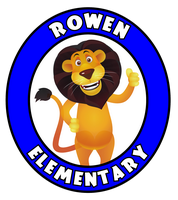Academic Subject
|
Big Ideas
|
Essential Questions
|
| English Language Arts |
|
|
| Foundational Skills |
An expanded vocabulary enhances one’s ability to express ideas and information. |
- What are words?
- Why learn new words?
- How does one develop and refine vocabulary?
|
| Reading Informational Text and Literature |
- Effective readers use appropriate strategies to construct meaning.
- Critical thinkers actively and skillfully interpret, analyze, evaluate, and synthesize information.
|
- What do good readers do to make sense of the text?
- How do strategic readers create meaning from informational and literary text?
- How does what readers read influence how they should read it?
- How do readers know what to believe in what they read, hear, and view?
- How does interaction with text provoke thinking and response?
|
| Writing |
Audience and purpose influence a writer’s choice of organizational pattern, language, and literary techniques. |
- What makes clear and effective writing?
- Why do writers write? What is the purpose?
- Who is the audience? What will work best for the audience?
|
| Grammar and Sentence Structure |
Rules of grammar and language conventions support clarity of communication between writers/speakers and readers/listeners. |
- How do learners make decisions concerning formal and informal language in social and academic settings?
- How do grammar and the conventions of language influence spoken and written communication?
|
| Speaking and Listening |
- Effective speakers prepare and communicate messages to address the audience and purpose.
- Active listeners make meaning from what they hear by questioning, reflecting, responding, and evaluating.
|
- How do task, purpose, and audience influence how speakers craft and deliver a message?
- How do speakers employ language and utilize resources to effectively communicate a message?
|
| Research Skills |
Effective research requires the use of varied resources to gain or expand knowledge. |
- What does a reader look for and how can he/she find it?
- How does a reader know a source can be trusted?
- How does one organize and synthesize information from various sources?
- How does one best present findings?
|
| Mathematics |
|
|
|
Numbers and Operations
|
- Numerical quantities, calculations, and measurements can be estimated or analyzed by using appropriate strategies and tools.
- Mathematical relationships can be represented as expressions, equations, and inequalities in mathematical situations.
- Mathematical relationships among numbers can be represented, compared, and communicated.
- Good problems solvers used the following strategies when they get stuck: a) Restate the goal. Identify what you know and what you need to find out, b) Represent the problem visually, c) Try trial and error, d) Relate the problem to similar (easier) problems, e) Look for patterns, and f) Work backward from the end result or eliminate possible answers.
|
- What is a number?
- What does it mean to estimate or analyze numerical quantities?
- When is it appropriate to estimate versus calculate?
- What do good problem solvers do when they get stuck?
- How are relationships represented mathematically?
- How is mathematics used to quantify, compare, represent, and model numbers?
|
| Algebraic Concepts |
- Patterns exhibit relationships that can be extended, described, and generalized.
- Mathematical relations and functions can be modeled through multiple representations and analyzed to raise and answer questions.
|
- What is a pattern?
- How can patterns be used to describe relationships in mathematical situations?
- How can recognizing repetition or regularity assist in solving problems more efficiently?
- How can data be organized and represented to provide insight into the relationship between quantities?
|
| Geometry |
Geometric relationships can be described, analyzed, and classified based on spatial reasoning and/or visualization. |
- How are spatial relationships, including shape and dimension, used to draw, construct, model, and represent real situations or solve problems?
- How can the application of the attributes of geometric shapes support mathematical reasoning and problem solving?
|
| Measurement, Data and Probability |
- Measurement attributes can be quantified and estimated using customary and non-customary units of measure.
- Data can be modeled and used to make inferences.
|
- Why does “what” we measure influence “how” we measure?
- In what ways are the mathematical attributes of objects or processes measured, calculated, and/or interpreted?
- How precise do measurements and calculations need to be?
|
